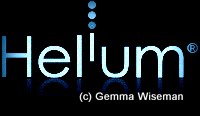
Published: August 5 2001 on Helium
Graffiti is a struggling, public art. It is an art form struggling for respect. The internet bristles with graffiti examples on walls, trains and buses. It also bristles with a large number of websites advertising companies with the expertise to remove graffiti effectively. There is little detail of the origins of graffiti. Some claim examples from ancient Egypt, Pompeii, Rome and the Mayan civilization. But, in the ancient worlds, it is difficult to identify "commissioned", legal murals from personal spontaneity and daring.
Graffiti is commonly based on "chunky" outlined words. The words are usually short and represent some abstract thought such as LOVE or WAR! Basic graffiti may be little more than a bold word, perhaps daubed in bright colour. The more insidious forms are called "tags" representing the sign of a particular type of person, group or gang. It is these tags that cause upset in the community. Many seem little more than pointless vandalism of property. It is these tags that vandalise public transport in particular, requiring specialized, costly chemical concoctions to remove them. Many young people favour tagging as an expression of challenging the law. For, in many countries, it is illegal to practise this.
However, while tagging may bring down graffiti as an art form, there are other types of graffiti that are quite intriguing. In Sheffield, a country town in Tasmania, there are a host of graffiti type murals on shop walls. The town has become known as a tourist attraction. It is "the town of murals". These murals represent origins of businesses in the town. The old blacksmith is depicted on the brick shop wall. And the effect is magical. The colour, the size of the murals add to the charm of the township; a wonderful sight on grey, winter days.
But Sydney, in N.S.W., has perhaps one of the more incredible stories of respectable graffiti. Arthur Stace, a barely literate man, born in 1887, would spend the early hours of the day walking the streets of Sydney. In white chalk, he would etch the word ETERNITY on the footpaths. For some time, no one knew who was doing this. But his word was well known. His beautiful, scrolling script was easily identifiable. For 37 years, he chalked his sermon in a single word. Finally, 10 years after he died, Sydney recorded his art in a plaque in Sydney Square.
Graffiti will struggle as an art form while it appears to deface public property. The gaudy spray of colour, or hastily scribbled outlines of words on private fences or school walls, will always be regarded as vandalism. But commissioned work, especially murals, that may enhance the streetscape, offer a possible outlet for the street art junkie. The problem is, how do these artists advertise their skill? One website, www.melbournegraffiti.com offers a gallery of graffiti work. The gallery is a means of auditioning the work of any graffiti artist world wide. But these outlets are few. Until society provides a legal canvas for these artists, graffiti will struggle for acceptance as a respectable, valid art form.